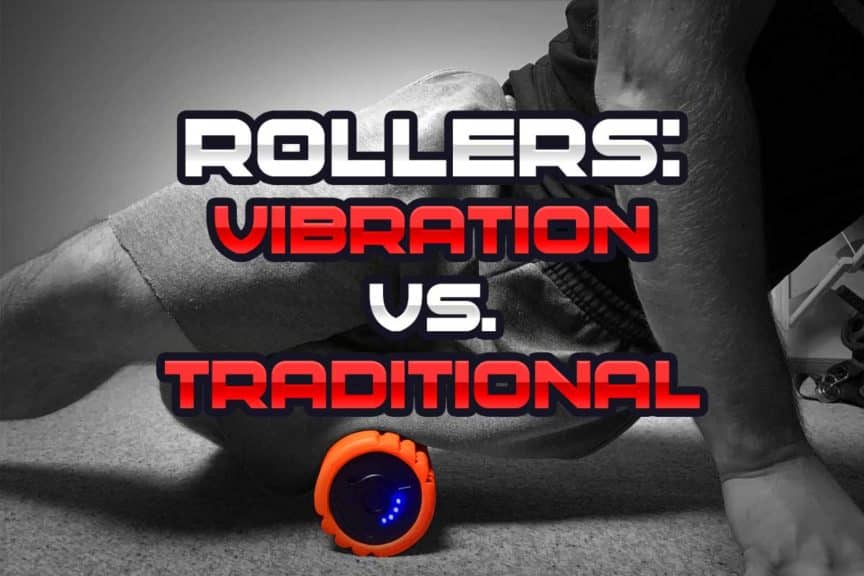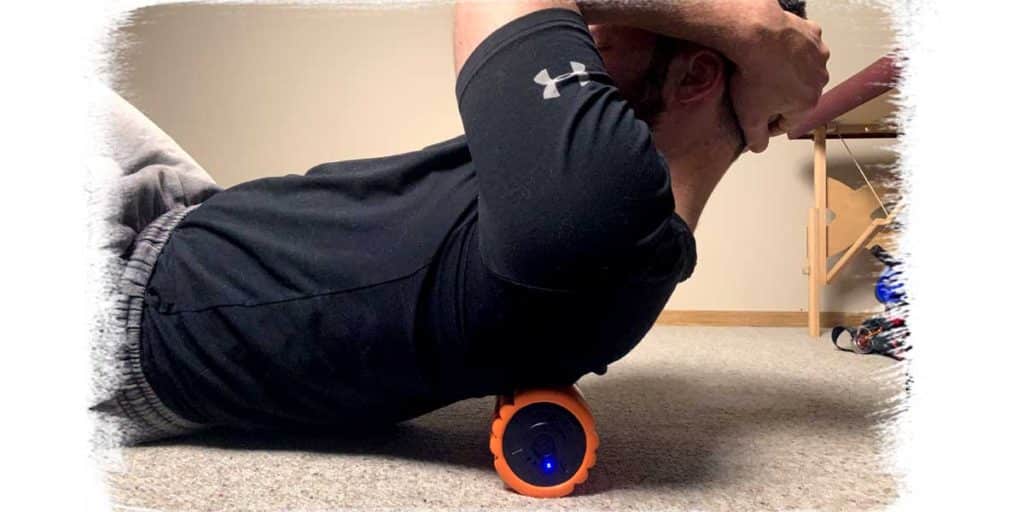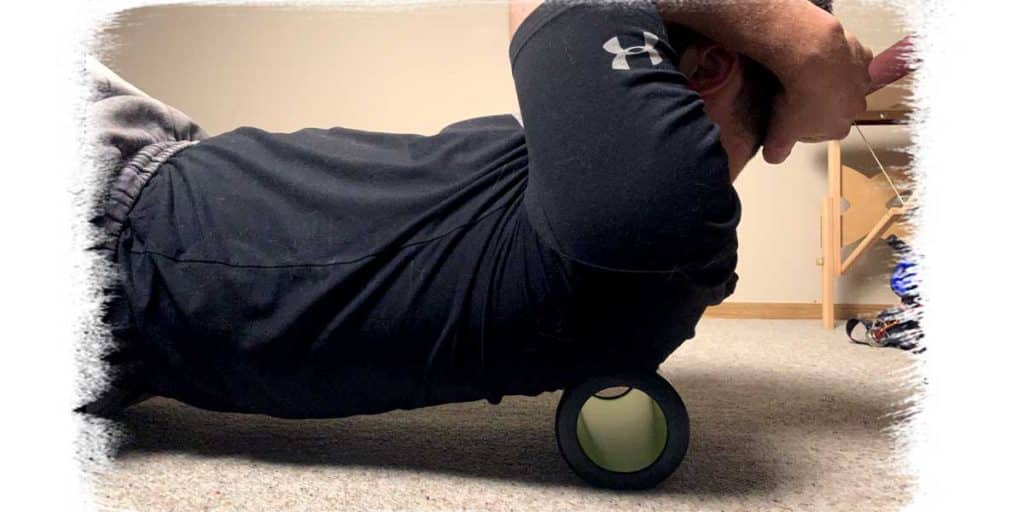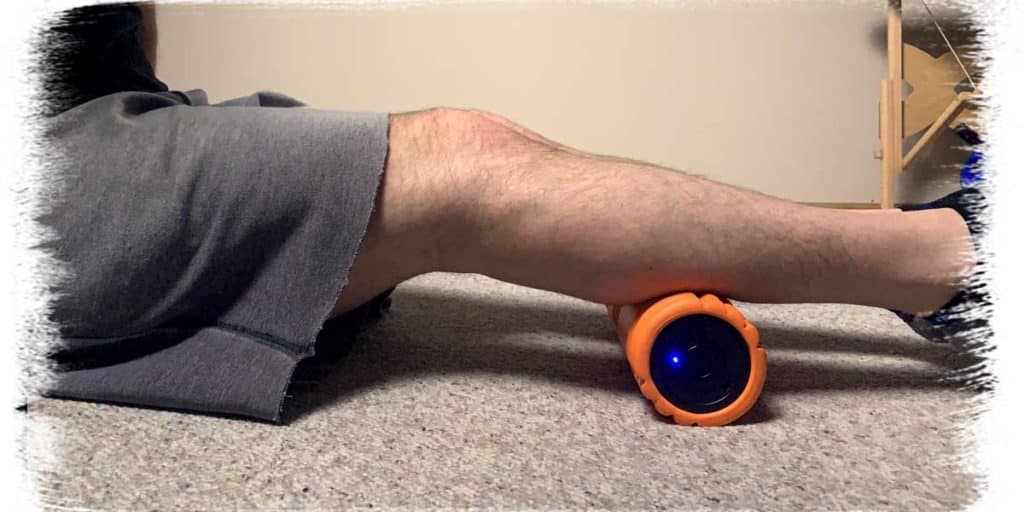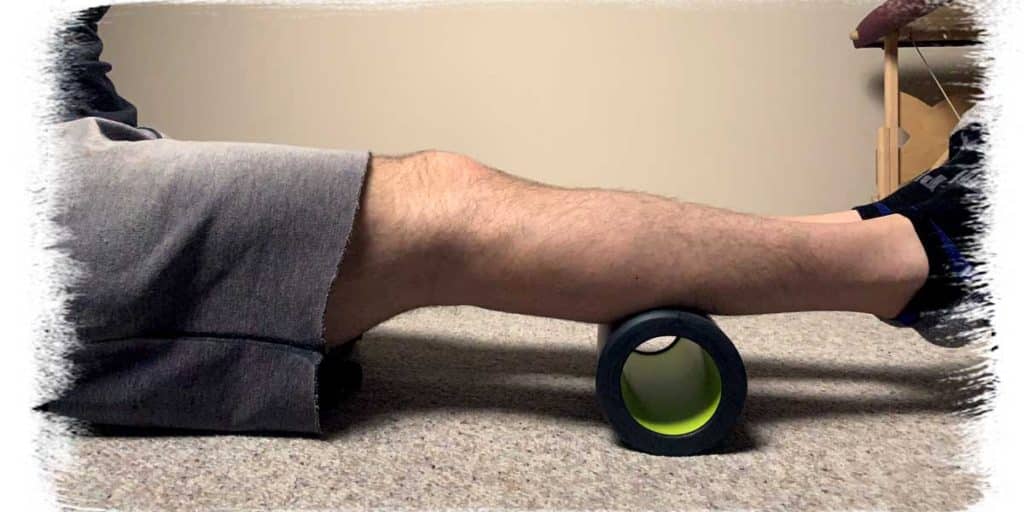If you’re wondering if there could be a therapeutic difference between using a regular foam roller versus one of those new, fancy, vibrating rollers that are becoming increasingly popular these days, you’re not alone. Many people across the internet are wondering this same question and, therefore, if one truly reigns superior to the other. And when looking at the findings within the academic literature, the answer may actually surprise you.
While traditional foam rollers have been shown to have modest effects with improving tissue mobility and decreasing tension-based pain, vibration therapy has largely been shown to yield statistically significant improvements for enhancing blood flow, decreasing muscle soreness and improving balance.
So, does this mean that a vibrating roller is automatically the new king and that all other rollers are worthless? Not necessarily. There’s a lot of important information to look at when comparing these two very different yet similar devices.
If you’re interested in learning the important factors to consider when deciding which type of roller may be best for you, then be sure to keep on reading, as this article will cover all that you need to know to make the most informed decision possible when determining which type of roller is likely best for you.
ARTICLE OVERVIEW (Quick links)
Click (or tap) on the following article headlines to jump to that particular section of the article.
- Why use a roller at all?
- Unique benefits of a vibrating roller
- Unique benefits of a traditional roller
- How to determine which type of roller is best for you
- Bonus: How to get the most out of ANY roller
- Final thoughts
Related article: Vibrating Massage Balls: Here’s Some Effective and Nifty Benefits
Why use a roller at all?
There are a near million reasons as to why an individual may want to use a foam roller as part of their overall health and wellness routine; they can be used for general relaxation, warm-up routines, cool-down routines, muscle relation, pain reduction, various exercises and just about any other reason one could possibly think of.
However, foam rollers of any type are most often used for soft-tissue-related purposes, meaning most people use them as a means to help their muscles stay loose, healthy, relaxed, and pain-free. So, for the sake of this article, we are going to be basing the use of all types of foam rollers (i.e., vibrating or non-vibrating) around this particular intention.
While I’ll very soon get into the details as to the unique benefits of vibrating rollers and traditional non-vibrating rollers, it’s important to keep in mind the objective that each of these rollers tries to achieve, which is to help you feel better, move better and perform better for your daily pursuits and/or specific sporting activities.
Rollers exist largely as a means to effectively target key areas of our body and perform self-treatment to the tight or sore muscle tissues in these regions that would otherwise be hard to target. Not everyone can afford to get regular massages from massage therapists, and it’s not always practical to do so. Thankfully, these rollers can often do a great job of serving as a substitute set of hands or elbows from a traditional massage therapist.
This is where rollers come in extremely handy since they allow us to treat many of these sore or tight areas on our own, all while saving money and being able to do so from the comfort of our own home. Rollers can be used for a handful of seconds or for an extended period of time-based on the needs and intentions of the individual. They provide great flexibility in this regard; you get to choose the areas you want to treat, how long they’re treated, and the intensity you want them to be treated with.
Unique benefits of a vibrating roller
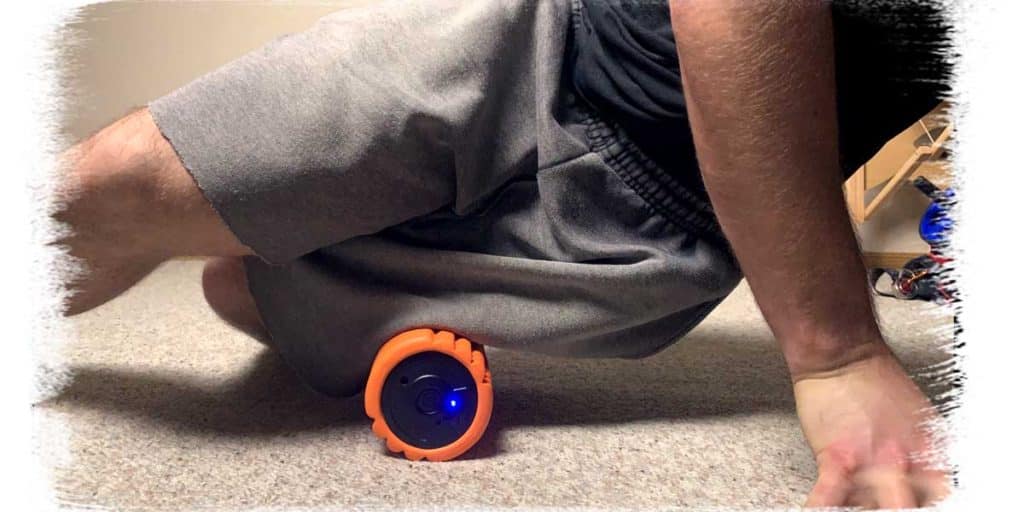
One of the most unique and beneficial aspects of a vibrating roller is that it essentially doubles as a traditional roller whenever you don’t want the vibrations. In other words, you can use the vibrating roller as a traditional, non-vibrating roller by using it when it’s turned off (it also comes in handy when the battery is dead).
Aside from that fun little bonus, the main unique feature of a vibrating roller is that it, well…it vibrates. But what’s so unique about that? Well, let’s dive in a bit deeper at the unique benefits that localized vibration therapy offers:
Related article: Massage Gun vs. Vibrating Foam Roller – Is One Better than the Other?
Vibration therapy has been studied in primarily two different ways. The first way in which it’s been studied for its benefits is through what’s known as whole-body vibration. This refers to a substantial portion of the body experiencing vibration, typically by having an individual sit on a vibration plate.
The second method is through localized vibration therapy, in which only a targeted portion of the body experiences the vibration. This is how a vibrating foam roller works, and what’s great is that the scientific literature has found some great effects that localized vibration therapy can produce for soft tissues (i.e., muscles and tendons), which I’ll quickly discuss below.
Vibration therapy enhances localized blood flow and muscle oxygenation
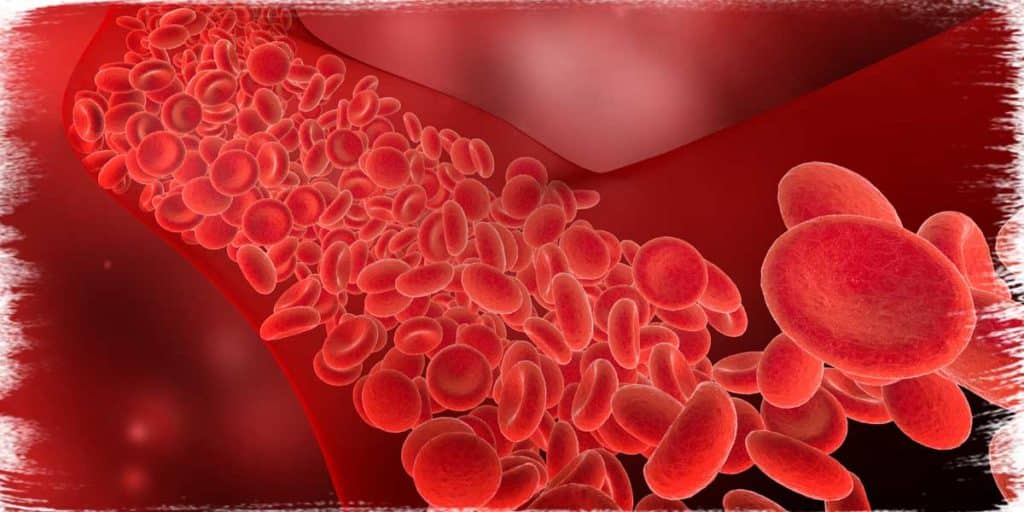
Enhancing blood flow to muscles and increasing the amount of oxygen available to those muscles can significantly affect those tissues. Muscles and their associated tissues require oxygen, which is carried in the bloodstream.
Vibration therapy has been shown to increase this highly coveted blood flow and muscle oxygenation to areas experiencing this vibration, such as in the calves.1 There are multiple critical implications to this occurring, with the main ones being healthier tissues that experience less pain, less tension, more mobility, and decreased likelihood of injury.
It’s worth noting, however, that the oxygenation effect has been found more within whole-body vibration therapy. Though in theory, this could also happen with local-vibration therapy.
Vibration therapy reduces muscle soreness and perceptions of pain
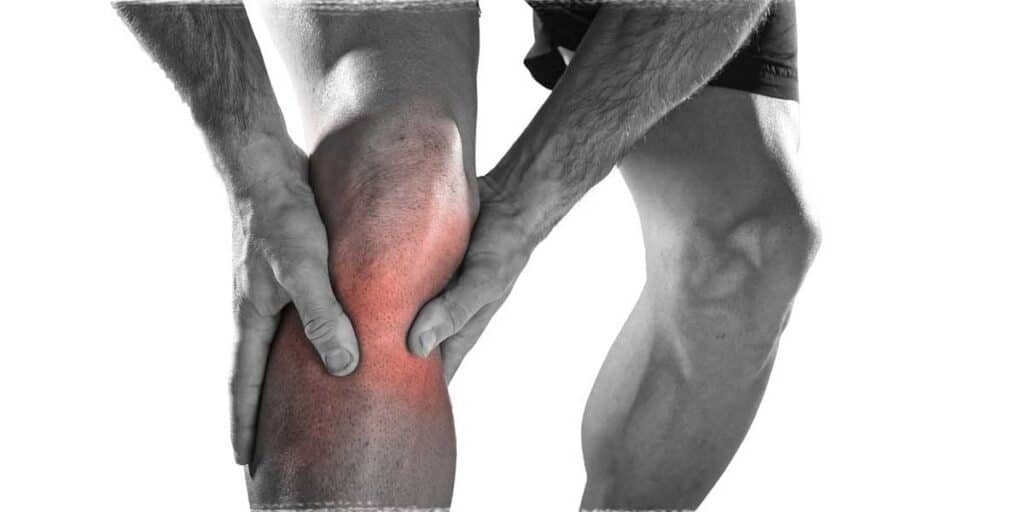
The effects of localized vibration therapy have been shown to prevent the occurrence of delayed onset muscle soreness (otherwise known as DOMS) after working out.2 In addition to this, it’s been shown that localized vibration therapy can significantly reduce the extent of calf pain and gluteal pain in male recreational runners.3
One study, in particular, showed significantly favorable reductions in pain threshold, passive hip extension range of motion and oxygen saturation when compared to traditional foam rolling.4
Vibration therapy speeds up ankle and hamstring injuries
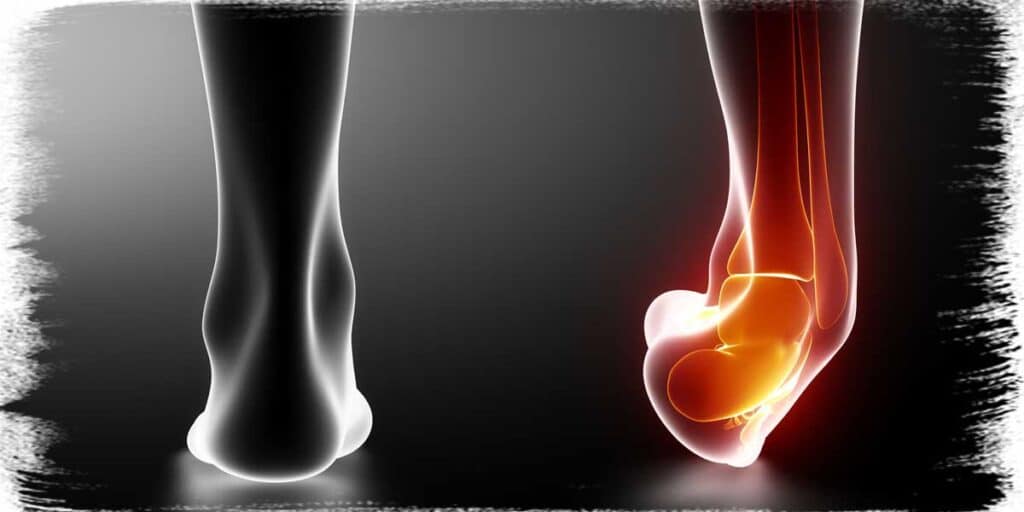
In addition to helping prevent muscle soreness and injuries, localized vibrational therapy has also been shown to help speed up recovery for ankle injuries and hamstring muscle strains.5
What’s even better is that vibration therapy is a safe form of recovery to use since there haven’t been any adverse effects found with its use in research or in the use of physical therapy.6 Combine that with the fact that it’s easy to incorporate, time-efficient, and can be used on a variety of body parts, and you have some solid reasons right here alone to use a vibration roller if you feel the need to do so.
Vibration therapy improves balance

There is a solid amount of literature these days that shows the benefits of vibration foam rolling therapy on improving balance in young and athletic populations.7 About this particular study, the participants also showed improvements in proprioception and strength of the quadriceps muscles.
The exact mechanism(s) behind how vibration enhances our balancing abilities isn’t fully understood. Still, it’s believed to largely be due to enhancing a special vibratory reflex that exists within the body, which better “primes” the nerves for detecting movements and sensations within the body. This “priming” allows the brain and muscles of the body to more adequately understand the joint positions and sensations occurring within the area.
Unique benefits of using a traditional foam roller
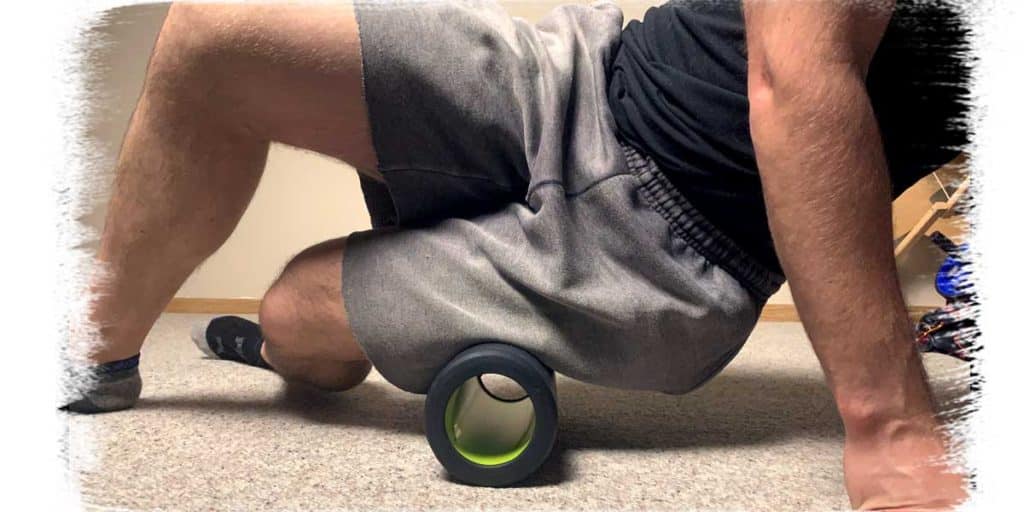
If you want to simply write off the traditional foam roller and opt for a vibrating roller, don’t count the traditional roller off just yet; there are some great unique features that this type of roller can offer. One of them being that there is literature out there that has found that traditional foam rolling offers favorable results on reducing muscle fatigue, enhancing range of motion and balance when directly compared to vibratory foam rollers.8
And, if you’re dead-set on owning a vibrating roller, it will literally only set you back a couple of extra dollars to get a traditional roller as well.
The chances are that so long as you select a foam roller that has the right amount of firmness for your personal needs, you’ll be able to experience better movement, less muscle tension, and feel better overall so long as you do your rolling on a regular basis (the same for which you’d also need to do if you were using a vibrating roller as well).
At the end of the day, what’s likely to produce the most noticeable and favorable results with your rolling is the frequency and consistency for which you stick with it. Yes, the vibration will likely further augment and speed up the effects, but making changes to your overall tissue health and extensibility won’t work unless YOU do.
Traditional foam rollers offer an amazing amount of versatility
One of the best features of traditional rollers (aside from the fact that they cost substantially less than vibrating rollers) is that they tend to be a bit more versatile when it comes to selection. Vibrating rollers pretty much come in a rather standard size (they can vary slightly in diameter), often known as a “travel roller” size. While this is indeed a rather convenient size, it does have some limitations.
Traditional foam rollers can be found in various sizes, which tend to allow more versatility for rolling techniques. They can also be used for various exercises, such as core stability training, which is rather hard if not impossible to do on smaller rollers.
Traditional foam rollers come in a greater variety of softness and firmness
Another unique benefit of the traditional foam roller is that they tend to come in a greater range of firmnesses than vibrating rollers. This is especially advantageous if you are new to rolling or have rather tight or sensitive tissues. If this happens to be you, starting with a very soft or forgiving roller may be the ideal starting point as anything above this in terms of firmness may be too uncomfortable.
Vibrating rollers can only go so soft before they can’t be any softer since they contain a hard shell from which the motor inside is protected from. A traditional roller doesn’t have this limitation, so you can get rather soft ones if need be.
How to determine which type of roller is best for you
Now you know the unique differences between vibrating rollers and the more traditional foam rollers, the question comes down to which one you feel is best suited for you and your needs. While this can all come down to a myriad of different factors for each individual to consider, the are a few key factors that you will really want to keep in mind:
Cost differences between vibrating and traditional foam rollers
Arguably, the most universal factor for individuals to consider is the cost difference between these two types of rollers. Every individual’s personal budget will look different, which is the main factor when determining if one type of roller is more practical than another.
Since vibrating rollers tend to be more expensive, they tend to be more of an investment for those wishing to purchase one. If budget isn’t an issue, I’d absolutely recommend picking one up. However, you can still make great progress with traditional rollers; I used traditional rollers for years and made favorable progress without any vibratory rollers at all.
How frequently are you planning on using your roller?
If you only plan on using your roller on a rather infrequent or inconsistent basis, it may not be worth dropping the extra money for the vibrating roller. This is only because to make noticeable and efficient progress, rolling should likely be done on a highly frequent or regular basis. Though vibrations emitted from a roller can help create rather favorable changes to muscle tissue, you’ll likely need to roll these tissues quite regularly to receive these additional effects, assuming that you’re hoping to notice any unique changes when compared to using a traditional roller, that is.
Bonus: How to get the most out of ANY roller
Regardless of the type of roller you decide may be best for you (vibrating or otherwise), there are some great tips to keep in mind when using them in order to ensure that you get the most out of each rolling session that you perform. The following tips are helpful to keep in mind for any type of roller that you’re using and for any body part that you may be using the roller on:
The slower you roll, the better off you’ll be
When it comes to getting muscles and their associated tissues to relax and settle down as much as possible, many individuals make the mistake of rolling too quickly over the sore/tender areas.
While it’s understandable that we want to roll over these areas more quickly since they’re more sensitive (and thus uncomfortable), it’s oftentimes worth rolling more slowly and thus putting up with the longer duration of discomfort when going over these spots. This is because the sustained pressure of the roller over the targeted muscle(s) affords more time for those muscles to relax.
Avoid the bony areas when foam rolling
Regardless of the type of roller you’re using, and regardless of how soft or firm it may be, you won’t be doing yourself any favors when it comes to rolling over the rather bony areas on your body. Not only is there simply no real muscle tissue to roll over on these areas, but there’s also the likelihood that you could irritate the thin amount of delicate tissue that you’re essentially pinching between the roller and your bone. Bony areas feel terrible to roll over with a roller, so avoid doing this at any and all times.
The most common bony areas that people mistakenly roll over are the outside of the upper thigh bone (known as the greater trochanter) and the very front part of the hip bone, known as the anterior superior iliac spine (the ASIS). You’re very likely going to irritate the tissues in these areas if you try to roll over them, so don’t worry about rolling near them or around them, just not over them.
Final thoughts
When it comes to determining which type of roller is “better,” there’s a lot to consider. From an academic/scientific standpoint, it seems that vibrating rollers do produce noticeably favorable changes in the environment of muscle tissue when compared to their counterpart, the traditional foam roller. And that can certainly be a good thing.
But that doesn’t mean that the traditional foam roller is to be written off – it can still offer some unique features and applications that its technological successor can’t quite meet. You can experience great things from each type of roller; it really comes down to how dedicated you are to getting your rolling habits established.
If your budget allows, then yes, absolutely pick up a vibrating roller – they’re pretty great, but remember that you still can make good things happen with traditional rollers as well.
Above all else, stick with it, whichever type of roller you choose. Technology is nice to have but consistently is king when it comes to making the positive changes that you’re after!
Move well. Live bold.
-Jim
References:
1. Robbins D, Elwell C, Jimenez A, Goss-Sampson M. Localised muscle tissue oxygenation during dynamic exercise with whole body vibration. J Sports Sci Med. 2012;11(2):346.
2. Veqar Z, Imtiyaz S. Vibration therapy in management of delayed onset muscle soreness (DOMS). J Clin Diagn Res JCDR. 2014;8(6):LE01.
3. Broadbent S, Rousseau JJ, Thorp RM, Choate SL, Jackson FS, Rowlands DS. Vibration therapy reduces plasma IL6 and muscle soreness after downhill running. Br J Sports Med. 2010;44(12):888-894.
4. Romero-Moraleda B, González-García J, Cuéllar-Rayo Á, Balsalobre-Fernández C, Muñoz-García D, Morencos E. Effects of vibration and non-vibration foam rolling on recovery after exercise with induced muscle damage. J Sports Sci Med. 2019;18(1):172.
5. Peer KS, Barkley JE, Knapp DM. The acute effects of local vibration therapy on ankle sprain and hamstring strain injuries. Phys Sportsmed. 2009;37(4):31-38.
6. Cochrane DJ. Good vibrations?–The use of vibration therapy for exercise recovery, injury prevention and rehabilitation. Phys Ther Rev. 2011;16(6):438-454.
7. Lee C-L, Chu I-H, Lyu B-J, Chang W-D, Chang N-J. Comparison of vibration rolling, nonvibration rolling, and static stretching as a warm-up exercise on flexibility, joint proprioception, muscle strength, and balance in young adults. J Sports Sci. 2018;36(22):2575-2582.
8. De Benito AM, Valldecabres R, Ceca D, Richards J, Igual JB, Pablos A. Effect of vibration vs non-vibration foam rolling techniques on flexibility, dynamic balance and perceived joint stability after fatigue. PeerJ. 2019;7:e8000.

Hi! I’m Jim Wittstrom, PT, DPT, CSCS, Pn1.
I am a physical therapist who is passionate about all things pertaining to strength & conditioning, human movement, injury prevention and rehabilitation. I created StrengthResurgence.com in order to help others become stronger and healthier. I also love helping aspiring students and therapists fulfill their dreams of becoming successful in school and within their clinical PT practice. Thanks for checking out my site!

